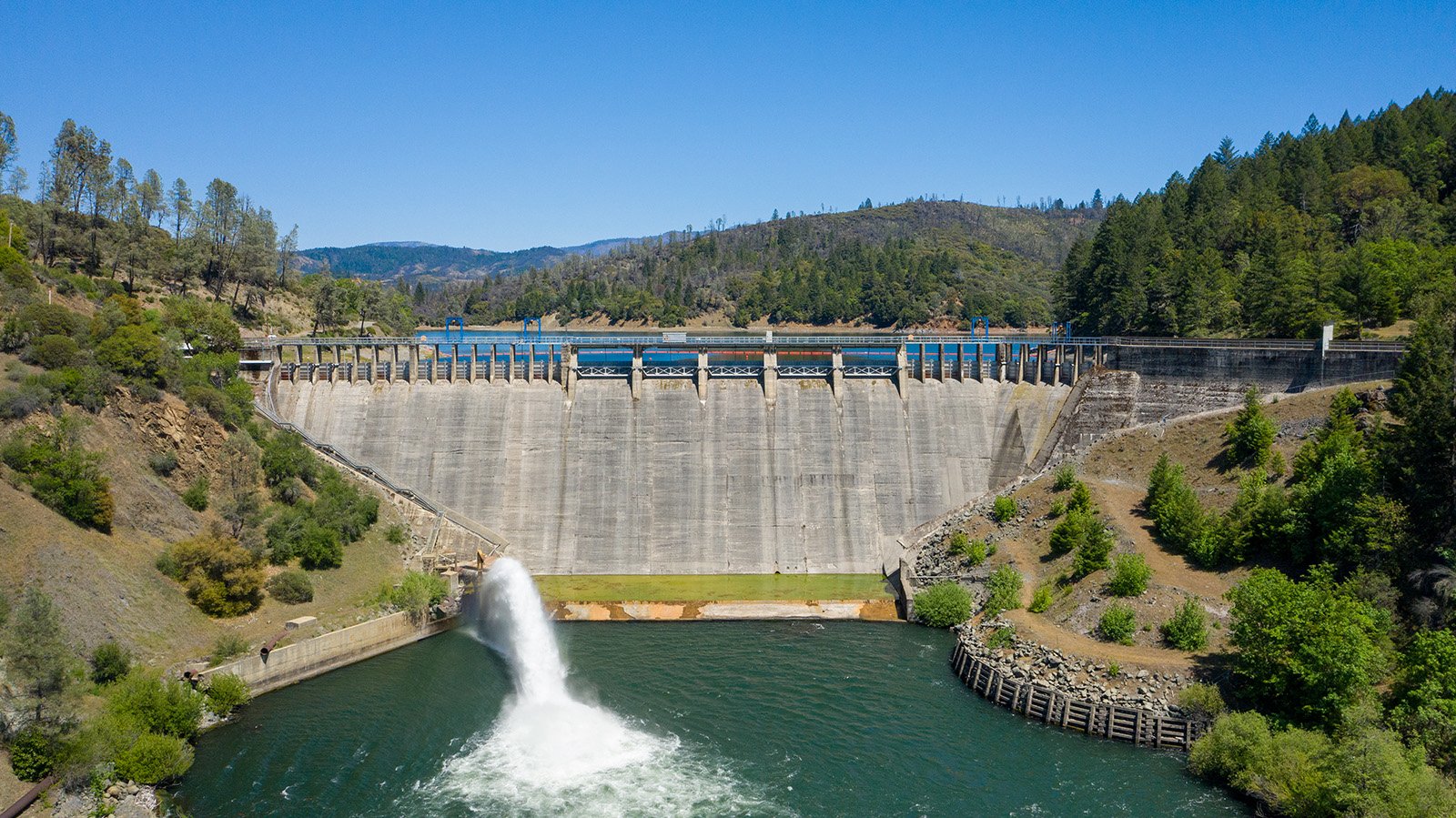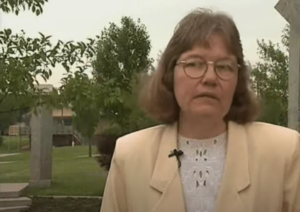Utility Releases Fast-Track Plans for Removing Dams on California’s Eel River

Photo: Scott Dam by Kyle Schwartz.
By Scott Harding
The removal of two dams blocking Northern California’s Eel River is one step closer to happening. On November 17, Pacific Gas and Electric Company (PG&E), the owner of the dams, released its initial draft plan for dismantling the Scott and Cape Horn dams and relinquishing its license for the 113-year-old Potter Valley Hydroelectric Project.
PG&E’s straightforward plan would remove the dams as early as 2028–a remarkably fast timeline. But it also included a more complex alternate plan put forth by a group led by Sonoma Water. While still removing the dams, the alternate plan would also construct a new diversion system to send Eel River water to irrigators in the adjacent Russian River watershed.
This news comes as the removal of four dams on the nearby Klamath River is underway, with one dam there already removed and the others to follow in 2024. American Whitewater is engaged in the dam removal efforts on both rivers.
As with the Klamath, the Eel River dams have contributed to a significant reduction in the river’s salmon populations, and impacted water quality. These impacts affect diverse groups dependent on a healthy river system, especially local Tribes and commercial fishermen.
By diverting water to the Russian River watershed, the two hydropower dams have also reduced the Eel River’s natural flow. Additionally, the dams have flooded several miles of river and limited boaters’ ability to access and enjoy the 12-mile-long reach between the dams.
The Potter Valley Hydroelectric Project is in critical condition. Its 138-foot Scott Dam is at such a high risk of failure during an earthquake that its reservoir can no longer be filled. The 62-foot Cape Horn dam lacks effective passage for salmon and steelhead. The project’s powerhouse hasn’t generated electricity since 2021. Faced with this situation and the resulting financial losses, PG&E no longer wants these dams.
American Whitewater and other advocates for the Eel River welcome PG&E’s accelerated plan for dam removal. The five-year timeline is ambitious but also not fast enough to ensure the survival of the river’s fishery. The alternative plan by Sonoma Water, while potentially feasible, might introduce further delays due to its complexity, and it would perpetuate diversions of Eel River water.
The removal of these dams will make the Eel the longest free-flowing river in California, with nearly 200 miles of boatable river between its Coast Range headwaters and the redwood-lined Pacific Ocean. Dam removal is essential for restoring the health of the mainstem Eel and enabling the recovery of its anadromous fishery.
PG&E is scheduled to submit its final draft for license surrender and dam removal to federal regulators by May 2024, followed by the final surrender application in January 2025. American Whitewater is participating in the review and comment process for each of these steps. Our goal is to see the dams removed as quickly as possible, that the river be restored to its pre-dam condition, and that the public will be able to safely access and enjoy the undammed sections.
For those interested in learning more, PG&E’s Initial Draft Surrender Application and Conceptional Decommissioning Plan and comment interface are available online (the document download password is “PV_Surrender”).
This post originally appeared at americanwhitewater.org.


